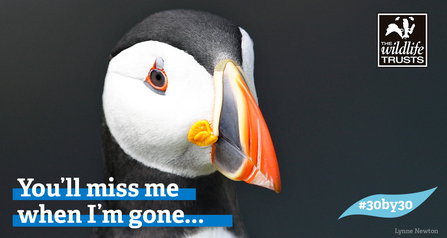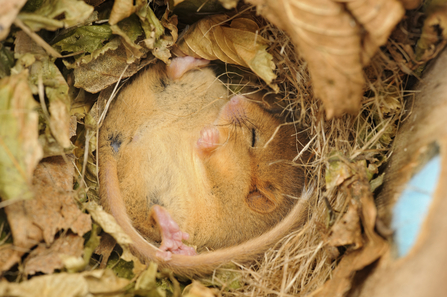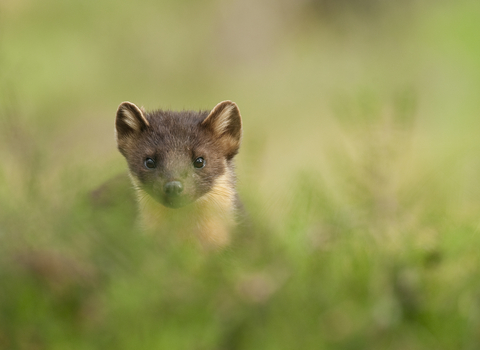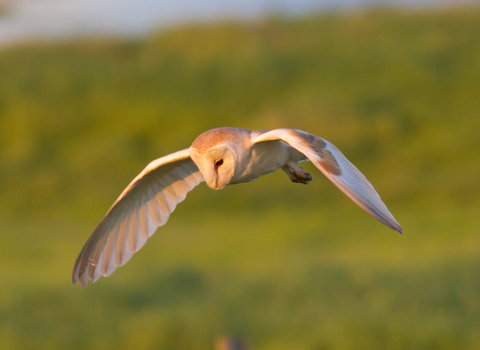Words matter. They have the power to change minds, to make or break a brand. They can be used as weapons or a force for good.
#26Wild may be over…but the story isn’t
Emma Bradshaw
26 was formed knowing all this – believing in that power to create positive change. And it is the driving force behind the projects that we run with our partners. Partners like The Wildlife Trusts who – from the day John Simmons (26 co-founder) and I met head of campaigns Kaye Brennan and head of communications Jo Richards back in January 2020 – said yes to all our ideas for a very special project. One in which our writers could use their voices to speak up for our vulnerable wildlife.
The result was astonishing. Over the course of September, we had the privilege of sharing 56 centenas – a 100-word poetic form created by John – highlighting the plight of some of our most at risk species. Some were iconic (beaver, hedgehog), some cute (hazel dormouse, puffin), some unexpected (cod, turtle dove). We featured mammals (wildcat), reptiles (smooth snake), insects (stag beetle) and birds (skylark), all as part of a project we called #26Wild.
These centenas were accompanied by a research essay in which the writers shared statistics – often shocking – and facts about the decline of their species, alongside the extraordinary lengths that organisations like The Wildlife Trusts are going to in order to help these creatures recover. Because recovery is possible. If we act now. It is no coincidence that during the digital side of our project The Wildlife Trusts launched their 30:30:30 campaign.
By the end of September what had unfolded was an extraordinary body of work dedicated to our collection of species; each centena as unique as the animal it championed. I use the word champion on purpose because what also happened is that in the course of carrying out their research – often from a desk, given lockdown – our writers fell in love. They grew passionate, sometimes angry, about the threat their creature faces. For some, this love was entirely unexpected; more than a few admitted initial disappointment when assigned a toad or butterfly. But, as we had hoped, that disappointment vanished as they started to learn more about their animal.
While publishing two pieces online every day we also ran a crowdfunding effort to make a book of the centenas. We’ve done this successfully on other projects and it creates a lasting, physical legacy.
We’re calling the book The Story’s Not Over because while the rates of decline are shocking – there really isn’t a better word for it – we can change course.
I was thrilled that we broke our initial target in under a week. We raised enough to publish and send the book out to all 123 supporters – to whom I say thank you so very much – and provide some vital funds to our friends at The Wildlife Trusts. At a time when charities need all the support they can get.
As well as leading this project, I was a writer assigned the hazel dormouse – one of the unabashedly ‘cute’ ones. But, as I discovered in the course of talking to a host of incredible people trying to help this vulnerable species, cuteness is no protection when your habitat has been systematically stripped away for decades. Sure, those eyes can melt hearts but they haven’t stopped numbers declining 30-50% since the turn of the millennium. Half the population gone in just 20 years. That’s the same amount of time my brother has been on this planet.
Over the course of the last nine months, this project has me smile, cry and rage. Most of all, it has changed me. It’s changed the type of books I’m reading, the kinds of conversations I’m having. It has fundamentally changed how I view the natural world around me and my place in it. It has made me more aware that I am part of the ecosystem. That what I do has an impact on my surroundings.
As a consequence, it’s made me want to change my relationship with nature and while I don’t fully know what this means yet, I have already taken some baby steps: I’ve emailed my representatives urging them to advocate for a new Wildbelt designation in the UK’s proposed planning reforms; I’ve pledged my support for nature’s recovery; and, of course, I’ve joined my local Wildlife Trust.
Sometimes it feels very hard as one individual to make a difference. The climate crisis can feel too big. The numbers behind habitat and wildlife loss too scary. But #26Wild – alongside our new friends at The Wildlife Trusts – has shown me that my actions matter, however small they might feel.
And imagine if we all did a little something extra – all took one more baby step to help nature recover. Imagine the power behind each of us as individuals, coming together to change course. We can. We must. Our wildlife depends on it.





